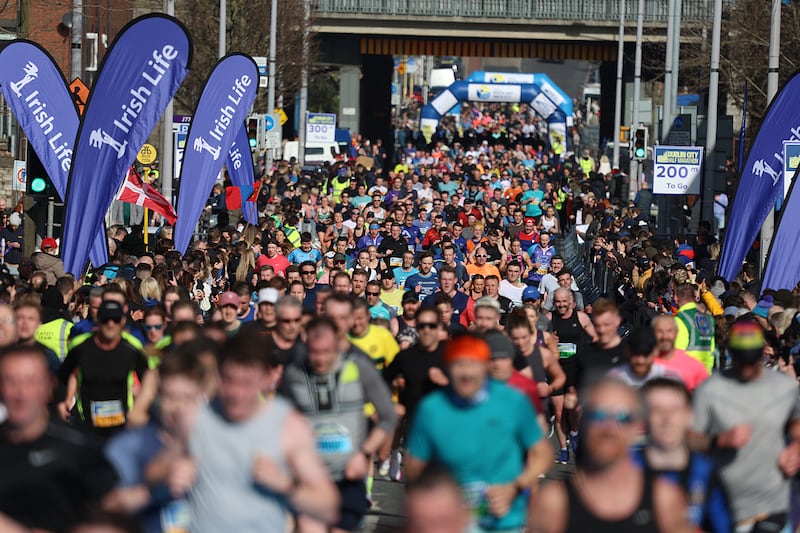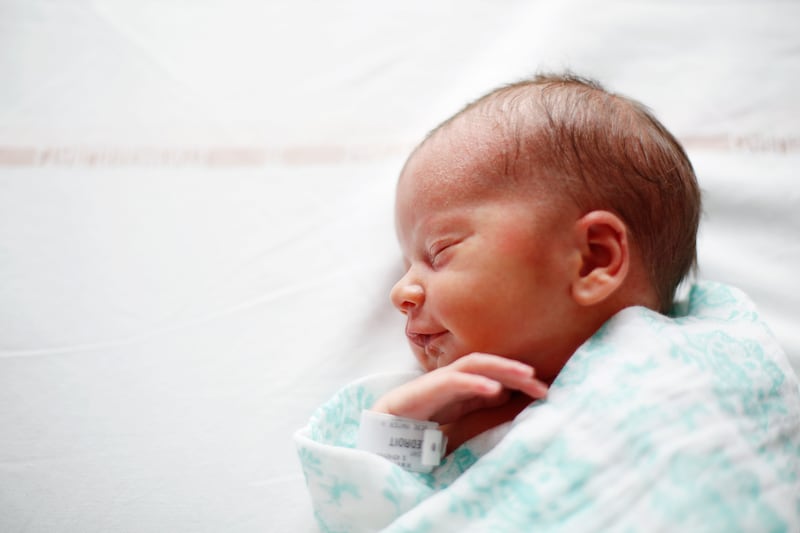"I was surprised when I started spending more time around here. It's considered to be one of the most beautiful harbours in the world. It was a big commercial area for centuries. It was a big military town as well," says Bruce Du Ve, a sailor from Australia, who recently moved to Dún Laoghaire and has set up an acupuncture clinic in the south Dublin seaside town.
And yet, he says, “it seems to be missing an opportunity. It’s such a nice area, you’d expect a higher class of restaurants, and more high-end retailers”.
Canvass locals and visitors for their views on the town, and the phrase “missed opportunity” comes up frequently.
The recent announcement that Dún Laoghaire Rathdown County Council is offering up two separate contracts totalling €200,000 for yet another round of fresh thinking on how the town and harbour should be developed has sparked debate, optimism, and a frustrating sense of deja vu.
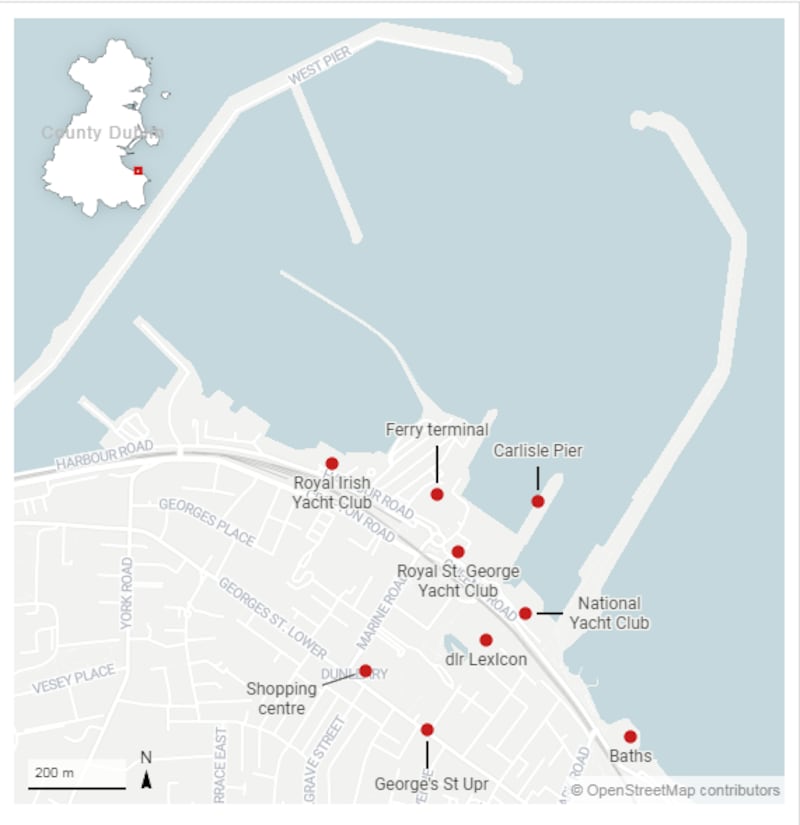
There is no shortage of vision for what could be done, but little agreement locally on what should be done
For locals, it’s about more than just economics; it’s about how Dún Laoghaire defines itself, and what kind of place it wants to be. It is about whether natural amenities such as the harbour can, or should ever, be commercialised and, if not, how it can be protected for future generations.
It is about the identity of a place that was Ireland’s first commuter town and, for a long time, one of the country’s busiest ports. And it’s about the town’s relationship to the capital city and the rest of Ireland.
Some of the issues faced here are not dissimilar from those facing other Irish towns and villages: a struggling retail environment; competition from online and out-of-town shopping; frustration over parking and rates; and a lack of consensus on any kind of strategy.
There is no shortage of vision for what could be done, but little agreement locally on what should be done.
If Dún Laoghaire can’t thrive in a period of economic recovery, the feeling seems to be, what hope is there for everywhere else? What chance have towns less blessed with abundant natural amenities, an affluent population, proximity to the capital, a large harbour and the sea?

Dún Laoghaire’s relationship with the sea has always been at the heart of its identity. The town gets its name from a fort built on the coast by High King Laoghaire in the fifth century. The harbour was constructed in the first quarter of the 19th century, after a succession of marine tragedies in the overcrowded, silted-up Dublin Bay.
Work began in 1817, and it took 25 years to build, using stone carted down by an innovative railway from the quarry in nearby Dalkey. Later, Ireland’s first railway terminated in what was then Kingstown, earning it the title of the country’s first commuter suburb.
Don McManus runs McManus Jewellers in the town and is a former member of the board of the now-defunct Harbour Company and former chairman of the town’s Business Improvement District (BID) group. He says Dún Laoghaire harbour “was the largest harbour in the world for over 100 years. It is as important as the Rock of Cashel, Clonmacnoise, the Skelligs and Dún Aonghasa.
“Who owns Dún Laoghaire harbour? Every citizen in Ireland owns Dún Laoghaire harbour.”
Approaching from the waterfront today, Dún Laoghaire could be any attractive European port town, with its row of seafront cafes built over the old train lines. Most locals agree that the council-built dlr lexIcon public library, much maligned when plans were first unveiled, has matured well into the townscape, and is proving itself an asset to the borough.
The revamped tearooms in the People’s Park and the weekend Coco food market are hits with visitors from all over the city. The pier is as big a draw as ever, attracting one million walkers a year, and the harbour is busy with leisure sailors.
Puerto Banus . . . or Beirut?
If the harbour area is Ireland’s Puerto Banus, as locals are fond of saying, the town itself is Beirut. We’ll get to Beirut in a moment; let’s start with the comparison with Spain’s ritzy Puerto Banus.
These days, if you take a stroll around the waterfront, that designation feels like a bit of a stretch. Aside from the East Pier, the most prominent sight is the empty ferry terminal, vacant since the Stena company pulled out of its Dún Laoghaire-Holyhead route in 2014. The rooftop restaurant is closed and the carefully designed plaza stands windswept and unused, except for occasional events.
The historic Carlisle Pier, which “exported more Irish citizens from the country than anywhere else in the State”, says McManus, is now a featureless waterside car park, offering parking rates of €5 a day. It needs significant work if anything else is to be done with it. Only half the pier is open to cars, over fears that the other half is not structurally sound enough to accommodate them.
The question for Dún Laoghaire now is what is to be done here. After Stena pulled out, big thinking was needed to replace the revenue the ferry business brought in. As they have done throughout the town's history, locals turned to the sea – specifically to cruise ships. But earlier this year, plans for a €30-million berth to accommodate supersize 250-metre cruise ships were abandoned after they were withdrawn by the council. This followed a judicial review brought by the Save Our Seafront campaign, led by People Before Profit/Solidarity TD Richard Boyd Barrett.
Also abandoned is a much-hyped floating swimming pool, like Berlin’s Badeschiff. Gone is an urban beach and the mooted floating hotel. Put on hold are plans for a diaspora museum, and a scheme to transform the ferry terminal into a 100,000sq ft digital hub.
The proposal to open Dún Laoghaire to cruise ships came down to the need for the harbour to bring in a revenue stream, says McManus.
“Notwithstanding the fact that it’s a massive harbour, it doesn’t make any money. The maintenance of a 200-year-old harbour, as you can imagine, it’s millions. And the harbour proper now is solely for the use of the boating and the nautical community.
“Of course the sailing community has to be accommodated. But the harbour was built as a port for Dublin. And it made sense to bring cruise liners in because it would have given a huge amount back to the city and the country.”
Not everyone was convinced it would have paid off. “There is a lot of economic data” to show that cruise-ship passengers don’t spend money, argues Barry Ward, a Fine Gael councillor in Dún Laoghaire Rathdown County Council.
“People come in, and they go off on tours organised through the shipping company. They don’t wander through [the town] and spend money in the shops.” There might have been some potential for local businesses to create dedicated offerings for cruise-ship companies, “but it would have been such a minuscule gain and the sacrifice would have been enormous”.
‘Necklace of destinations’
Boyd Barrett says his lobby group brought the judicial review on the basis of environmental concerns, fears that the cruise ships would make it more difficult for locals to enjoy the harbour, and because the cruise business would have brought “virtually no benefit for the town. Anybody stopping here would get on buses and go to Guinness [the Guinness Storehouse in Dublin city] and go to Glendalough [in Co Wicklow]”.
McManus disputes this. Research he did in Cobh found that cruise-ship passengers “do spend money. They come off the cruise ships and the local taxi drivers get money. The local petrol station gets money. The walking tours get money”.
Dún Laoghaire would have been part of a “necklace of destinations” for cruise companies planning tour itineraries. “Without Dublin,” he says, “there’s no necklace” and the country as a whole misses out.
All that remains of the plan now is a black-and-white printout Blu-Tacked to a window reading "Harbour Innovation Company"
Standing at Carlisle Pier, Ward points out to sea. He is in favour of what he calls a boutique cruise ship offering, but the notion of building the infrastructure needed to accommodate larger cruise ships was, he says, “fanciful. It was pie in the sky. It would’ve been a complete white elephant. There was no business case for it. Even if you had a cruise ship in there every night, we worked out that it would barely have washed its face”.
The Harbour Company was dissolved last year, following campaigning by Save Our Seafront. Dún Laoghaire-Rathdown County Council had sought to recover the assets, but it wanted to be indemnified from estimated liabilities of €33.5 million, and annual maintenance costs of €800,000. Instead, says Ward, the harbour was “lumped on [the county council], with massive liabilities”.
Now “we don’t have that kind of disposable income. The revenue stream for the harbour comes from moorings, the marina here, parking charges, and small rents and things like that”.
Ward walks me over to the ferry terminal building, with an elevated glass roof-section on top. “The turnover of the old Harbour Company was about €4 million. Back in the day, they would have had an income of about €5 million from the ferry alone. Here, you had a busy harbour terminal. You had shops here. You had a restaurant, the Purple Ocean, right there. Now it’s all gone.”
In their place should have been a digital technology hub that was to create 700 jobs and would have generated €20 million in rent over five years for the council.
“There’s a number of assets that are here. I use the term assets loosely because very few of them can actually realise an income, but this ferry terminal is one that can.”
The digital hub would have been “twice, three times the size of Dogpatch Labs [a start-up hub in Dublin city centre],” he says.
All that remains of that plan now is a black-and-white printout Blu-Tacked to a window reading “Harbour Innovation Company”. Last September, developer Philip Gannon pulled out of the project, after it was discovered that the Harbour Company had failed to secure a foreshore licence to lease the building. Ward still hopes it can be revived, on a smaller scale.
The council’s other assets include the East Pier, “but you can never do anything with that. You can’t sell it. And in itself is going to cost us millions because there’s lots of work that needs to be done on that”.
“Come over here,” Ward says, “I’ll show you. The pillars that hold up [Carlisle] pier are being corroded”. An engineer’s report put the cost of repairing it at €2.3 million.
‘The big fear’
Local businessman Breasal Ó Caollaí, who is a former secretary of the Dún Laoghaire Business Association, says “the big fear” is that what happened to Greystones, a seaside suburb nearby in Co Wicklow, could happen to Dún Laoghaire. “There are big areas on both piers that need work, or else it will go into the sea, like what happened in Greystones. They allowed it wash into the sea in Greystones so they could privatise it. And now the fishermen out there are not allowed to fish.”
Meanwhile, ambitious plans to put a floating swimming pool beside the East Pier, co-funded by the council, were withdrawn due to lack of funds. I tell Ward – who opposed the proposal from the beginning – that I think it sounds great.
“Do you really want to be standing there in your togs when people are walking up and down here? It’s just not the right place for it.”
One aspect of the harbour redevelopment, at least, is going ahead. Further along, past the East Pier, work is ongoing on the site of the old Dún Laoghaire baths, derelict since the 1970s.
A small jetty for swimming and marine leisure activities is nearing completion and there are plans to develop a cafe, artists’ studios, and a route through from Sandycove to the East Pier. But there’s a question mark now over whether the baths will include any actual baths, says Ward. “My own view is that there is not the demand for cold sea-water baths that there was in its heyday.”
Boyd Barrett believes, however, that “the swimming pool was a very substantial reason why people marched. In the past, the baths were just this huge hub for ordinary people to meet, engage in healthy activities, and where parents could bring children in a secure environment to learn how to swim.”
The council, he says, “just doesn’t want the hassle or the potential cost of running it”.
Beirut
Continue up Marine Road to George’s Street and it isn’t actually Beirut that comes to mind. Instead, with its shuttered shopfronts, charity shops and discount stores, you could be in any struggling town in the midlands or the west of Ireland.
The main shopping centre, one of the first of its kind on Ireland, is a charmless 1970s block, with little sunlight or relationship with the streets around it. Out on the street, for every one of the few attractive boutiques or shops that are making a visible effort to draw in visitors, there’s another empty unit with leaflets piling up inside the smudged glass doors.
Talk to traders about the difficulties they’re facing, and you hear the same complaints you will frequently hear in other towns: the cost of rates and of parking; a lack of pedestrian footfall; frustration with perceptions of the council’s failure to attract new businesses or customers, or even to keep the streets clean and the gulleys free of weeds; and a lack of affordable housing close to the town centre.
Ó Caollaí points out that the town has only two hotels now, compared with more than a dozen in its heyday.
Ask members of the council, and they’ll say that traders are too quick to talk the town down. “There is not a parking problem in Dún Laoghaire. If you look at the parking situation here, we don’t clamp. The cost of parking is €1.50 an hour, so less than half what it is in the city centre,” Ward says.
Everybody comes here now and says, oh my God, the seafront is beautiful, but what happened the shops?
As a retailer, McManus says the issue with parking is not a lack of spaces. “Dún Laoghaire is labelled by journalists as the worst place on the planet to park, which just isn’t true. We found out from an analysis that there are more places to park here than Dundrum.”
This was the thinking behind a much-vaunted smart-parking initiative, developed by IBM and put forward by BID which, McManus says, would have not only been self-financing, it would have provided a revenue stream. The proposal was ultimately rejected by the council in favour of reducing rates to businesses.
Whoever you talk to, it’s all a long way from the heyday of the 1980s when Dún Laoghaire was a shopping hub for swathes of south Dublin.
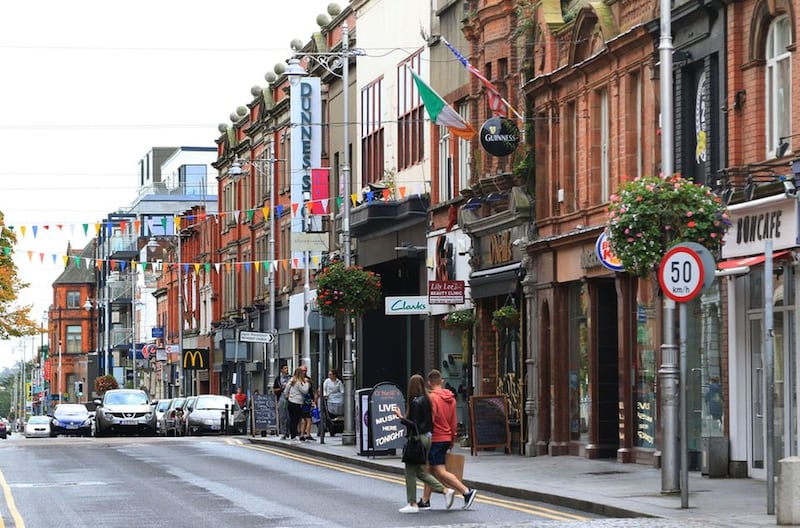
The growth of online shopping and the area’s proximity to Dundrum Town Centre, the State’s largest shopping centre, haven’t helped. But some traders say the problems were there before Dundrum opened in 2005. “I don’t think it’s Dundrum. I remember my first few visits to Dún Laoghaire in the 1980s, you couldn’t walk on the footpaths the place was so crowded,” says Ann Joyce, who runs Costello Flowers in the town, and has set up a residents’ group.
“Everybody comes here now and says, oh my God, the seafront is beautiful, but what happened the shops?”
What would she do to save Dún Laoghaire? “Buildings that are never going to be shops again, bring them back to residential. Make it easy for them to turn a space over a shop into a home. Clean up the town. You need to have people sweeping the streets. Cleaning the gulleys.”
And there needs to be a plan to incentivise particular types of businesses. The town, she says. doesn’t need any more “nail bars or charity shops or hairdressers. Every other week, there’s a new coffee shop opening, but some other one will have to close, because there isn’t the business there. It’s such a struggle for small shops to survive. We’d love to see the town brought back to life”.
She doesn’t want to see Dún Laoghaire trying to transform itself from Beirut into Porto Banus, she has inspiration closer to home: “With a bit of imagination, Dún Laoghaire could be like Howth.”
Experts
The council is seeking consultants to advise on new uses for the harbour, and to find solutions to declining commercial space “and over-concentration of housing in the town centre”.
It is offering two separate contracts of €100,000 each for an “assessment of the current marine and tourism uses of the harbour and its economic position, and advise on its future uses and income generating potential” and, second, for “a strategy to revitalise the town centre, particularly to grow employment opportunities”.
“They’re asking people what they should do,” says Ó Caollaí in disbelief. “You’d imagine they’d have an idea by now of what they should do.”
Ó Caollaí points out that the ferry terminal is not insulated, and can’t be used as office space without substantial improvement. But he is in favour of a proposal, which is in the County Development Plan, for a national watersports centre. “They don’t need experts to tell them to go ahead with the watersports centre. Why do you have to bring fellas in from London to tell you that?”
He’d also like to see a municipal yacht club, that would be open to everyone. Sailing shouldn’t be the exclusive pursuit of those who can afford the membership fees of the Royal St George or the Royal Irish, he says.
The bottom line for the harbour, he says, “is we don’t want to go the Greystones way. It’s got to be kept for public use. The idea of charging people to walk the pier, which they could consider, that could never be allowed to happen. It would be like bringing back the Border”.
Asked what the solution is for Dún Laoghaire, McManus quotes Fred Kent of the US Project for Public Spaces, an expert commissioned in 2012 to run a “How to Turn a Place Around” workshop in Dún Laoghaire. “He said, you have all the ingredients for a really good cake. Why don’t you go and f***ing bake it? That that was his way of putting it.”
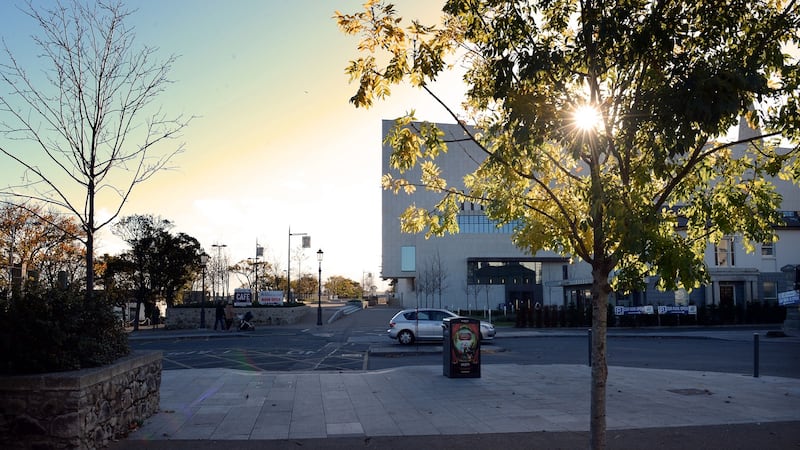
It would be an understatement to say McManus is frustrated. The council are looking for big ideas but, he says, there are already two reports in existence, including one commissioned by BID and paid for by the business community. In a back room of his jewellery shop on George’s Street, he pulls the report – the “20/20 Vision for Dún Laoghaire” – up on his computer.
“We had hundreds of meetings with residents and the local authority. They even put it in the County Development Plan, but they’ve forgotten they put it in the County Development Plan. There is no joined-up thinking.”
The report put forward suggestions for reviving the town centre, including demarcating George’s Street into four distinct quarters, introducing a shuttle bus, incentivising living over-the-shop accommodation, and introducing the smart parking system.
He thinks the council should now dust it down – along with the masterplan for Dún Laoghaire Harbour – and revisit its ideas. “Here it is, a town that has the most amazing potential. As you can probably gather, I’m frustrated beyond frustration at why it hasn’t come to fruition.”
There's too much talk, that's the problem. We need simple things, done well, and you can go for more after that
Boyd Barrett says that the challenge, now that the Harbour Company has been dissolved, is to give people locally power to decide what happens next. “The executive are essentially now dictating things, rather than the community and the elected representatives.
“First of all, we need to assert real community control over the harbour. We are part of setting up a harbour stakeholders’ group to ensure that happens.”
He is opposed to any part of the seafront being privatised, but supports the idea of a national public watersports centre. He would also like to see the development of a Dublin Bay biosphere and the diaspora museum on Carlisle Pier. The museum and watersports centre “are all in the development plan. But the executive have, in my opinion, no intention of delivering on them”.
More immediately, the Save our Seafront campaign has turned its attention to a number of empty council-owned properties in the town centre, that they want to see turned into social housing. It is also opposing the controversial Bartra capital “co-living” development in the former CBS school on Eblana Avenue and will occupy the site if that’s what it takes. “That co-living nonsense,” he says. “It’s like living in a box.”
Up on George’s Street, publican Tom Dunphy is putting sandwiches out and getting ready to deal with the lunchtime trade. He shows me a letter he got recently from Stubbs Gazette threatening court action over non-payment of €1,687 to BID. He’s not going to pay, he says, because he never saw any results from the spending by the group, which commissioned the 20/20 Vision Report.
BID was set up under a plebiscite and ran for a five-year period. It didn’t apply for a second term, says McManus, because “the council didn’t embrace the project” or take on board its proposals.
Dunphy is against the cruise ships proposal, because it wouldn’t bring any money into the town. “You’d have a better chance of targeting tour buses coming back from Wicklow or wherever.”
“There’s too much talk, that’s the problem,” he says. “We need simple things, done well, and you can go for more after that.”
Standing on the corner of Marine Road later in the afternoon, Bruce du Ve looks around him at the litter blowing around in the breeze.
Dún Laoghaire doesn’t need to solve everything at once, he says. It shouldn’t be that hard to make more of the assets it already has. “It’s not that expensive to keep your pavements clean.”










